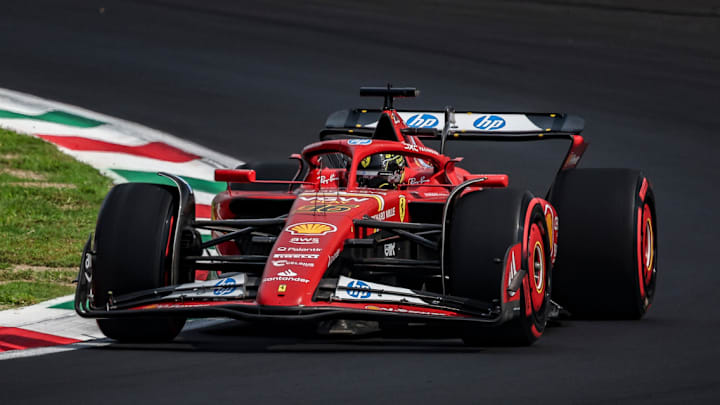Ferrari To Fast-Track SF24 Upgrades After Staggering McLaren Performance

Following McLaren's charge in the races since its mid-season upgrade, Ferrari had an upgrade ready for the United States Grand Prix at Austin. However, due to a change in plan, the Maranello team will introduce a slightly flexible front wing on the SF-24 for the upcoming Singapore GP, similar to McLaren's rear wing that took advantage of the grey area in the FIA regulations to create a semi-DRS effect on long straights during the race at Baku.
Ferrari's mid-season upgrades initially caused difficulties by reintroducing an old problem of high-speed bouncing. To address this, the team rolled out most of its planned innovations for the latter part of the season for the Italian Grand Prix at Monza. So far, there have been no major issues reported regarding the performance of these new upgrades.
According to a report by Formu1a.uno, Ferrari has accelerated its development schedule and will bring the new front wing, initially planned for Austin, to the Singapore Grand Prix. The wing is on its way to Marina Bay and will be ready for assembly and testing by both drivers, Charles Leclerc and Carlos Sainz.
This decision, guided by team principal Fred Vasseur, and head of aerodynamics Diego Tondi, aims to bring forward the last significant component. The new front wing remains a critical element of aerodynamics, as it is the first part of the car to interact with airflow. Its performance is crucial, as it must function as anticipated by the aerodynamicists.
Just like the rear wing on McLaren's MCL38 F1 car, which used a mix of materials to offer just enough flex under load to ensure it remains legal, Ferrari's development of the new front wing is not only concentrated on aerodynamic improvements but also on optimizing the composite materials to achieve beneficial flex characteristics.
However, optimizing composite materials to achieve flex only at specific loads and speeds, without compromising aerodynamics, is a complex task. Mimicking McLaren's flex work with a single update is both challenging and time-consuming. Not to forget that the components must pass stringent checks by the FIA, especially amid its recent crackdown on flexi wings.
Ferrari plans to use the data from Singapore to optimize its setup further in the three-week gap leading up to the race in Austin. The Circuit of the Americas will then serve as a crucial test to determine if the SF-24 F1 car has overcome weaknesses, particularly on medium and high-speed tracks.
Equipping the SF-24 with the full development package for the end of 2024 will help assess whether the current approach is effective, which could then be used as a foundation for the 2025 car. As regulations become more extreme, and gaps narrow, these cars are increasingly sensitive to dirty air, a factor that is accentuated when flexible aerodynamic components are pushed to their limits.
